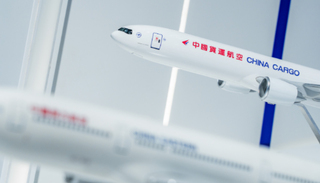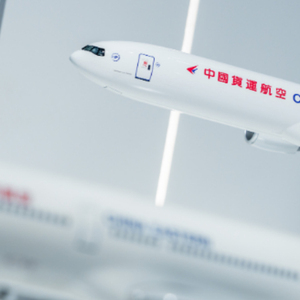by Xue Bingbing
"The tariff rollbacks have triggered a strong market rebound. Trans-Pacific air cargo is booming—space is sold out and everyone from airlines to top-tier forwarders is hiking rates," a veteran Shanghai-based air freight forwarder told Jiemian News on May 20.
On May 12, China and the U.S. issued a joint statement from Geneva announcing major progress in trade talks and a sweeping tariff rollback. The U.S. removed 91% of its added tariffs, with China reciprocating. Both sides also suspended a 24% retaliatory tariff.
The policy shift has led to a swift recovery in air cargo volumes and pricing. Last month, rates had plunged to 20 yuan per kilogram—well below cost—prompting significant losses for forwarders. Rates have since jumped by about 15 yuan, approaching 40 yuan per kilogram.
China Eastern Logistics confirmed a rebound in rates and stable volumes. Air China Cargo said it is still collecting data but noted that its U.S. routes are operating normally.
Space sold out, prices rising

Shippers who once booked last-minute are now securing space several days in advance, with bookings stretching through the week. As demand grows, airlines are adjusting rates frequently. For example, rates for the latter half of the week recently increased by 8 yuan per kilogram.
Unlike ocean freight, air cargo has limited flexibility to expand capacity quickly. Airlines rely on price adjustments to manage demand and allocate limited space.
While container ships can carry hundreds of thousands of tons, wide-body freighters like the 747-200F or 777F top out at around 100 tons. Smaller aircraft such as the A330-200F carry about 65 tons.
Launching new routes requires complex coordination between aviation authorities, airport slot allocations, and ground handling resources, making rapid expansion difficult. Even existing routes operate on fixed schedules, with airlines adjusting frequency seasonally.
E-commerce drives resilience
Cross-border e-commerce has emerged as the main driver of the air freight recovery. Industry data indicates that e-commerce shippers are more tolerant of price hikes than general cargo clients.
Air cargo typically includes high-value electronics, low-cost but high-margin consumer goods, and time-sensitive shipments. General cargo tends to be more price-sensitive and is often shipped by air only when delivery deadlines are tight.
With e-commerce clients more willing to pay a premium, they now account for more than 60% of shipments at some firms—surpassing traditional cargo.
Still trailing sea freight rebound
Despite the pickup, air freight has not matched the dramatic rebound seen in ocean shipping.
China Eastern's investor relations representative said U.S.-bound air cargo volumes were relatively stable even before the tariff changes, making the recovery less pronounced.
"Air cargo handles higher-value goods and is more resilient to tariffs. Sea freight took a bigger hit and is now bouncing back faster," the representative said.
A surge in e-commerce shipments in April also helped support operations. The representative noted that business "fared better than many expected."
Still, volumes and rates remain below last year’s peak. China Eastern currently operates about 20 U.S.-bound flights per week, down from an average of 28.
Before the tariff rollback, capacity had been shifted to Europe and Southeast Asia. "Those routes are doing well, and we can’t shift everything back to the U.S. overnight," the representative added.
Industry estimates place the break-even point for some forwarders at around 40 yuan per kilogram—the level at which many airline contracts are set. While recent price increases have narrowed losses, most forwarders are not yet operating profitably.
Looking ahead, logistics platform Flexport said the 90-day tariff relief could drive short-term gains in trans-Pacific air freight, though the longer-term outlook remains uncertain.





